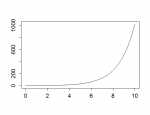I was out exploring in my asp today, and was running at around 1,000c. I never really noticed how much space above 1,000c my speedometer had on it, so I thought "The heck is the galactic maximum speed?"
After about 40-45 movie minutes I finally hit what looked to be the top of my speedometer, which was 2000c (although it ended up hitting 2001c after about a minute, WHOA big difference.)
So, if anyone was wondering what the Galactic Speed Limit is, then the answer is 2001c. I doubt you will ever need this as there has never been a sun 0.16ly away from the main system's star (at least that I have seen.)
Recap:
Maximum speed limit: 2001c
Time taken: 41 minutes
Distance to top speed: ~0.16Ly
- - - Updated - - -
Ignore the random thumbnails :X
After about 40-45 movie minutes I finally hit what looked to be the top of my speedometer, which was 2000c (although it ended up hitting 2001c after about a minute, WHOA big difference.)
So, if anyone was wondering what the Galactic Speed Limit is, then the answer is 2001c. I doubt you will ever need this as there has never been a sun 0.16ly away from the main system's star (at least that I have seen.)
Recap:
Maximum speed limit: 2001c
Time taken: 41 minutes
Distance to top speed: ~0.16Ly
- - - Updated - - -
Ignore the random thumbnails :X






